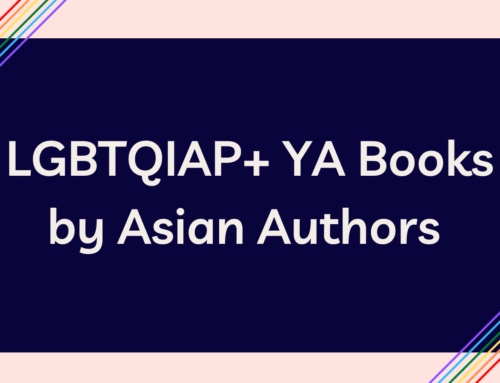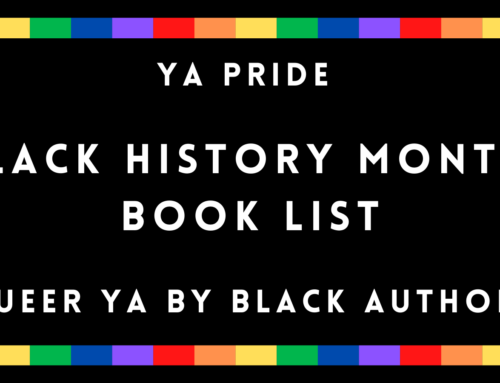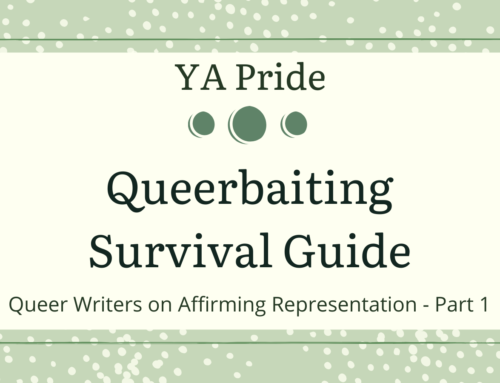We’re big fans of Rachel Gold’s first two books Being Emily and Just Girls… and today, we’re thrilled to reveal the cover for her newest book My Year Zero! I am so SO excited to be hosting this cover reveal– as I read My Year Zero I was filled with an overwhelming desire to make everyone ever in the whole history of ever read this book.
Along with the cover reveal, I had the chance to interview Rachel. Below we discuss the diversity within the book, geek culture, narratives in LGBQTIA+ YA and more! I hope by the end of it ya’ll are as excited about this book as I am. 😉 It’ll be out in stores March 29, 2016– so mark your calendars!
Lauren thinks she has a pretty good life—so why is it that she feels crazy most of the time? She figures it’s nothing she can’t fix by getting her first girlfriend and doing better at school. But how is she ever going to find a girlfriend in Duluth, Minnesota?
When she meets a group of kids who are telling a science fiction story online and gets invited down to the Twin Cities, she gets more attention than she ever expected, from two very different girls: charming Sierra and troublesome Blake.
Blake helps Lauren understand that she’s not the crazy one in her life. But Blake’s attention—and insights into life and living with bipolar disorder—threaten to destroy everything Lauren has created for herself, including her relationship with Sierra.
Soooooo…… *drumroll please*
.
..
…
….
…..
……
…….
……..
………
……….
………
……..
…….
……
…..
….
…
..
.
here is the cover!
Vee: In My Year Zero you represent a whole lot of different identities: Lauren, the main character is a lesbian, and Jewish. There are a few bisexual characters, and a major secondary character who is bipolar. Did you go into the story with these different aspects of diversity in mind? Or did they emerge as you wrote?
Rachel Gold: I started with Lauren and Blake, but let the others emerge as I wrote. The character of Blake, who is bipolar and bisexual, was inspired by my first girlfriend. She was bipolar and bisexual and amazing. She died last year and I still can’t quite handle that. It’s what started me writing this book. I had to put her back into the world in some way. And I wanted to show a person with a mental illness who was dealing with it the way I experienced it when we were together: she was clearly struggling but more compassionate because of it, more open, and unflinching about supporting me through my own struggles.
Lauren is Jewish because my aunt asked me why I didn’t have any Jewish characters in my books and I told her I’d write one. Plus Jewish identity is so interesting to play with. I grew up Jewish in a very Christian suburb and it’s surprising to me how much people don’t know about Jewish culture, and about what it’s like to be simultaneously visible and hidden, so I really started to have fun with that.
Lauren’s an out lesbian because I remember what it was like being lesbian at 16 and trying to date — and that worked so well with the story. But in case anyone thinks Lauren is me, she’s not. I worked backwards from the Blake character to create someone who was right for the story I wanted to tell. I have ADHD that includes emotional dysregulation and in my teens I had a lot of trouble with that. I didn’t want Lauren to have that level of mental health issues to deal with so I made her more balanced than I was at 16.
V: This book deals a lot with mental health and emotional abuse. Often, when I write about stuff like this, I get really fixated on getting the representation right, and the writing gets very preachy and message-laden. I thought you did a great job of avoiding that, while also providing really really solid representation. How do you think you managed to do that? Inquiring minds want to know. 😉
R: One of the great powers of fiction is that it lets you live through someone else’s experiences without all of the consequences. We learn so much better by seeing mistakes made or pain experienced (and recovered from), than we do by being told what’s what. I wanted Lauren to go from oblivious to realizing a lot of things, I wanted her to get to fail hard, and for the reader to go with her through that journey.
At the start of the book, the reader only know as much as Lauren knows. We discover what’s going on along with her (or hopefully one step ahead of her). That makes it difficult to be message-laden because she’s not that way in her own mind. So I think staying close to your characters’ voices is one way to avoid preachiness.
I’m also very lucky as an author because I have letters and journals from when I was 16-18. I read through them for this project and remembered how it felt to be in my first relationships (some of which were problematic, to say the least). That gave me a great place to come from in understanding what Lauren would and wouldn’t know, the mistakes she would make, and the degree to which she starts out not knowing what’s really going on around her and what an impact it’s had on her.
In terms of mental health messages and representing bipolar disorder, I really wanted to avoid having the bipolar character be the one who needed to be taken care of or having her disorder move the plot. I think we’ve all seen plots where a character goes off their meds, goes manic and that moves the action for a while. Not to say that’s not an important story to tell, but it’s been told. I felt that by showing a character with bipolar disorder who gets to be both heroic and desirable — and who is clearly in a loving family environment, works on her stuff and has a lot of support — it shows what’s necessary and what’s possible, rather than stigmatizing mental illness.
In an effort to get all that right and not make it look like bipolar is a cakewalk, I did a ton of research. I read a lot of non-fiction and memoir on the topic. I researched what was common between ADHD and bipolar so I could create a bridge from some of my own experiences. And because I know I can’t fully understand bipolar, I worked with a popular bipolar blogger, Natasha Tracy, as a consultant to make sure Blake came through in a way that felt true.
V: You always include some sort of geeky/game-y thing in your books. In this one, it’s a role play story. Why do you always include an aspect like that?
R: My characters are geeks, nerds, gamers, artists and so of course they’re doing geeky/gamey things plus I am a HUGE geek. When I was a teen, we didn’t even have a name for it like “geek culture” so I love that it’s openly celebrated now.
I’ve been involved in group storytelling projects, role-playing games and projects that combine the two starting when I was about 13. It’s always fascinated and entertained me the way that people’s personalities and agendas infect the story.
By having the characters in My Year Zero writing a group role-play story together, it gave me another layer to show you how they’re feeling. The story they’re telling is a way for them to communicate with each other. As the relationships change, the story changes.
V: One of my favorite things about My Year Zero is that Lauren is already out when the book starts. Most LGBTQIA+ YA books are about the experience of figuring out your sexuality & coming out– and while that is a really important experience to represent, so are the experiences and difficulties that come after that! In My Year Zero we get to see that. Why do you think it’s important to show those experiences?
R: Not everyone is coming out at 15-18, some of us were already out. I started coming out at 13 and by 15 had already asked a girl out (she said no, but in a super sweet way). What I really needed was more concrete information about how to date and how to work with all the emotions around dating, love and sex.
To tell a story in that emotional landscape, I needed a hero who already knew her own mind, knew she wanted to be in a sexual relationship with a girl, but didn’t know how to do that. This let me have the sex Lauren has in the book be complicating — rather than the traditional coming out story where sex often represents the resolution of issues.
By age 19, about 68% of American teens have had sex. There are not enough YA novels that are both sex-positive and aware of the complex emotional landscape around sex. I’m a fan of what Carrie Mesrobian has done for straight guys in YA with problematic sexual relationships, so I wanted to do some of that for relationships between girls.
Plus, a lot of the sex scenes I’ve read in LGBTQIA+ YA novels are idealized. That’s important and wonderful, but if those are the only scenes you’re reading, and if at some point you’re having sex that isn’t all that ideal, it can be easy to feel like there’s something wrong with you. (Believe me, there isn’t.) I wanted to write about girls who didn’t have amazing orgasms right off the bat. I wanted to write about how fear and discomfort often exist side-by-side with amazement and pleasure.
But I should add that although I was deliberately messing with the traditional romance plot, My Year Zero is still very much a love story.
V: Sooo….. let’s talk about the cover!! I love it, and think it’s a perfect fit for the book. What are your thoughts? And what was the design process like?
R: I work with a great graphic designer on my covers, Kristin Smith. I think we started with a conversation where I said: “Lauren’s an illustrator so I’d love to have a drawing by her on the cover and then, you know, some stuff.” Kristin came up with the design of the two off-center pages where the left page is Lauren’s drawing plus her angrily scribbling in the book’s title and the right page is math notes by Blake.
We started with a different sketch idea, but then I was talking to you, Vee, about covers and you mentioned how important it was to have a butch lesbian on the back cover of my novel Just Girls. That was eye-opening for me — that even with more LGBTQIA+ YA in the world, representation is still crucial — so we switched Lauren’s illustration to two girls kissing.
I can tell you without spoilers that it’s Lauren and Blake kissing, which happens early in the book and is highly problematic for Lauren. She’s sketched it to try to work out how she feels.
To do Lauren’s art, I hired Alexis Cooke, who was so perfect to draw for Lauren. Alexis has been doing amazing art about mental health for a few years now (along with many other topics). Kristin, Alexis and I talked through some ideas, Alexis read the problematic kissing scene, and then she came up with this great illustration. I think it really shows Lauren’s mix of confusion, aversion and desire. For more of Alexis’ work, check her out on Tumblr and DeviantArt.
Blake’s math page on the right-hand side contains some infinity-related math. There’s a central theme in the book about zeros and infinities that has to do with bipolar, depression, emotions and self-expression. My dad, who is a mathematician, patiently explained some of the mathematics of infinities and gave me equations to look for. (I cheated and put some of my own favorites on there; anything that’s wrong is not attributable to my dad.)
Then I wrote out the math in handwriting I copied from the letters my first girlfriend sent me when we were 16. One letter actually included a few paragraphs about the mathematics of infinities that sparked the zero/infinity theme. I wanted that impression of her handwriting on the cover because the book is in honor of her.
—
Find out more about My Year Zero, or add it on Goodreads.





